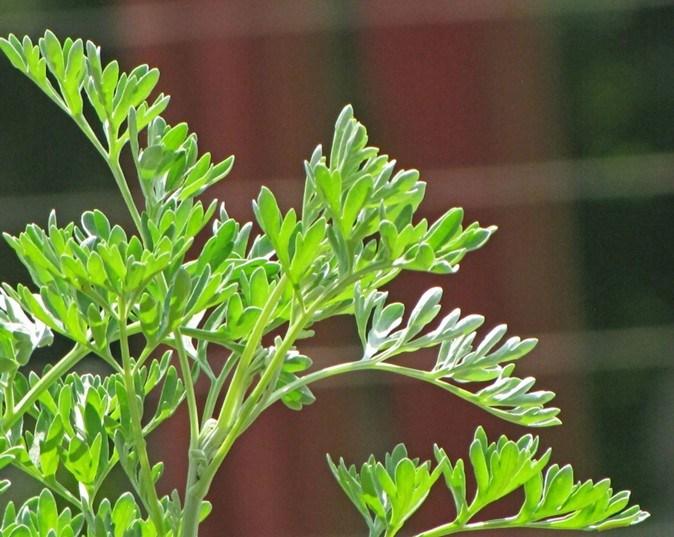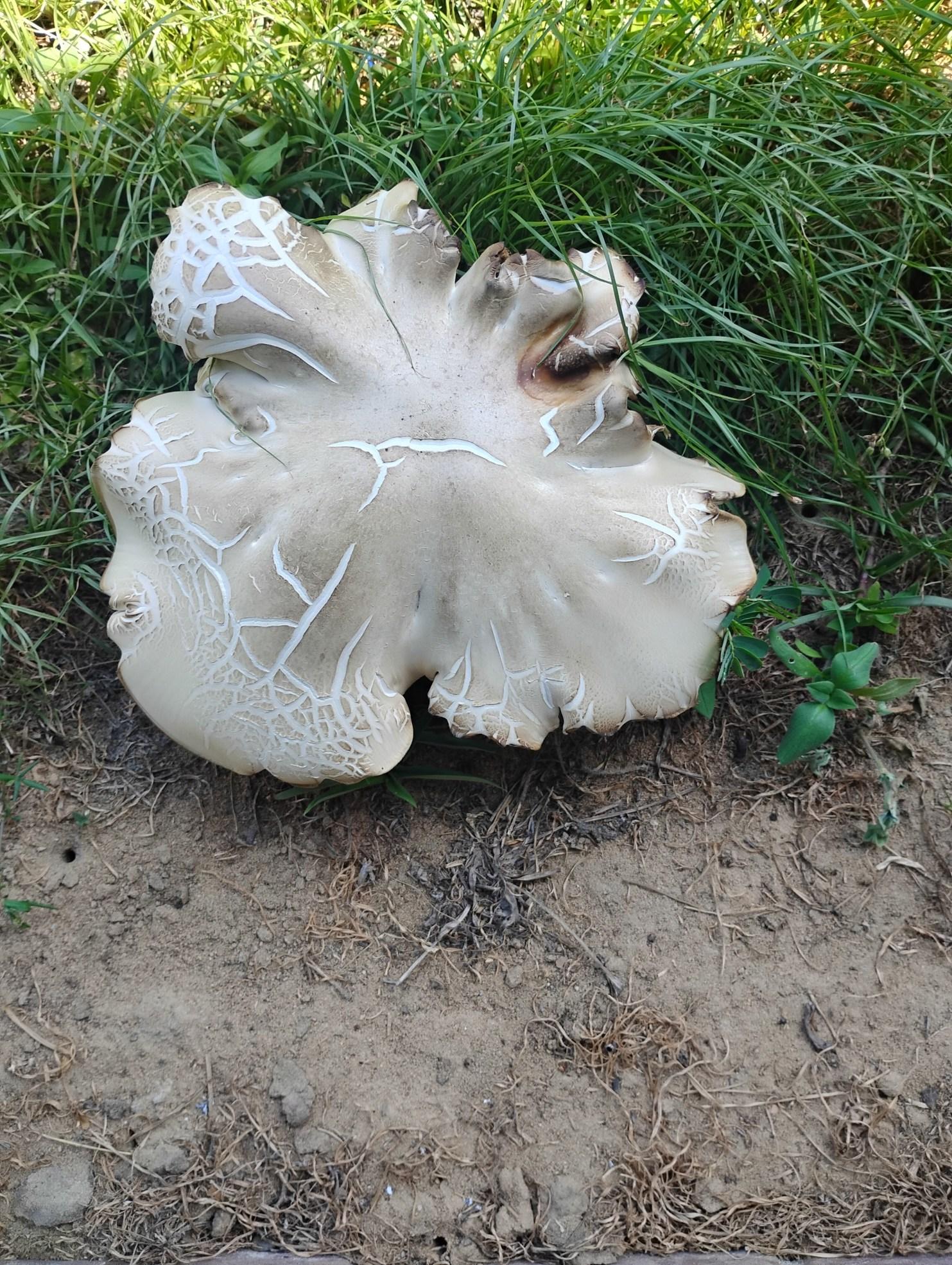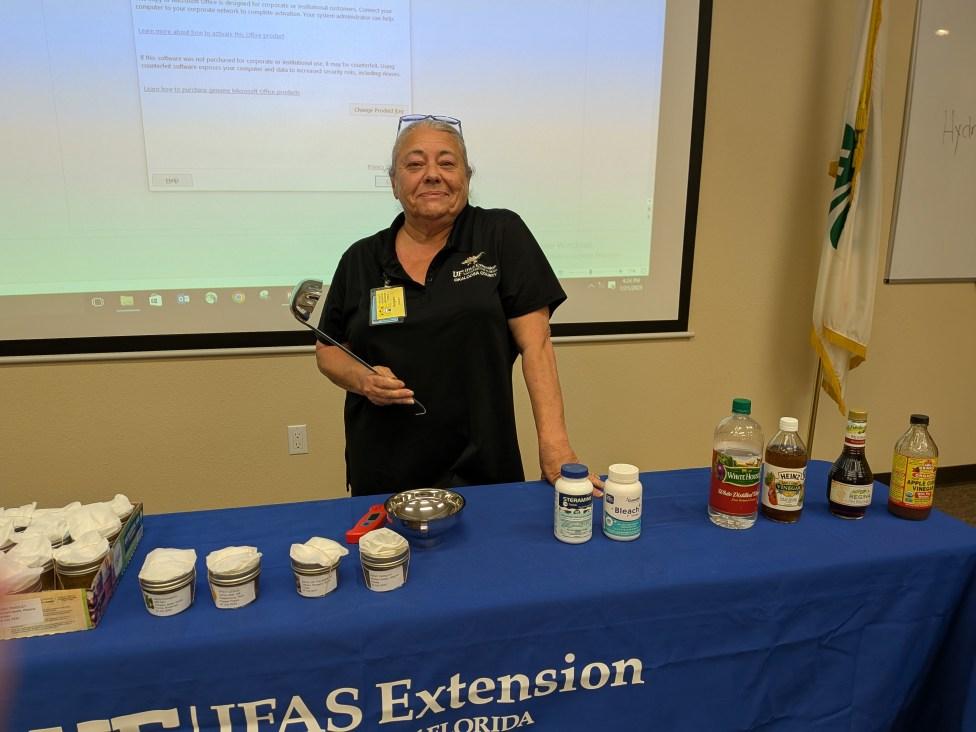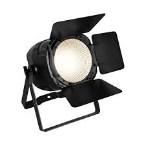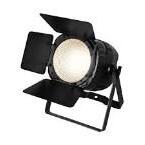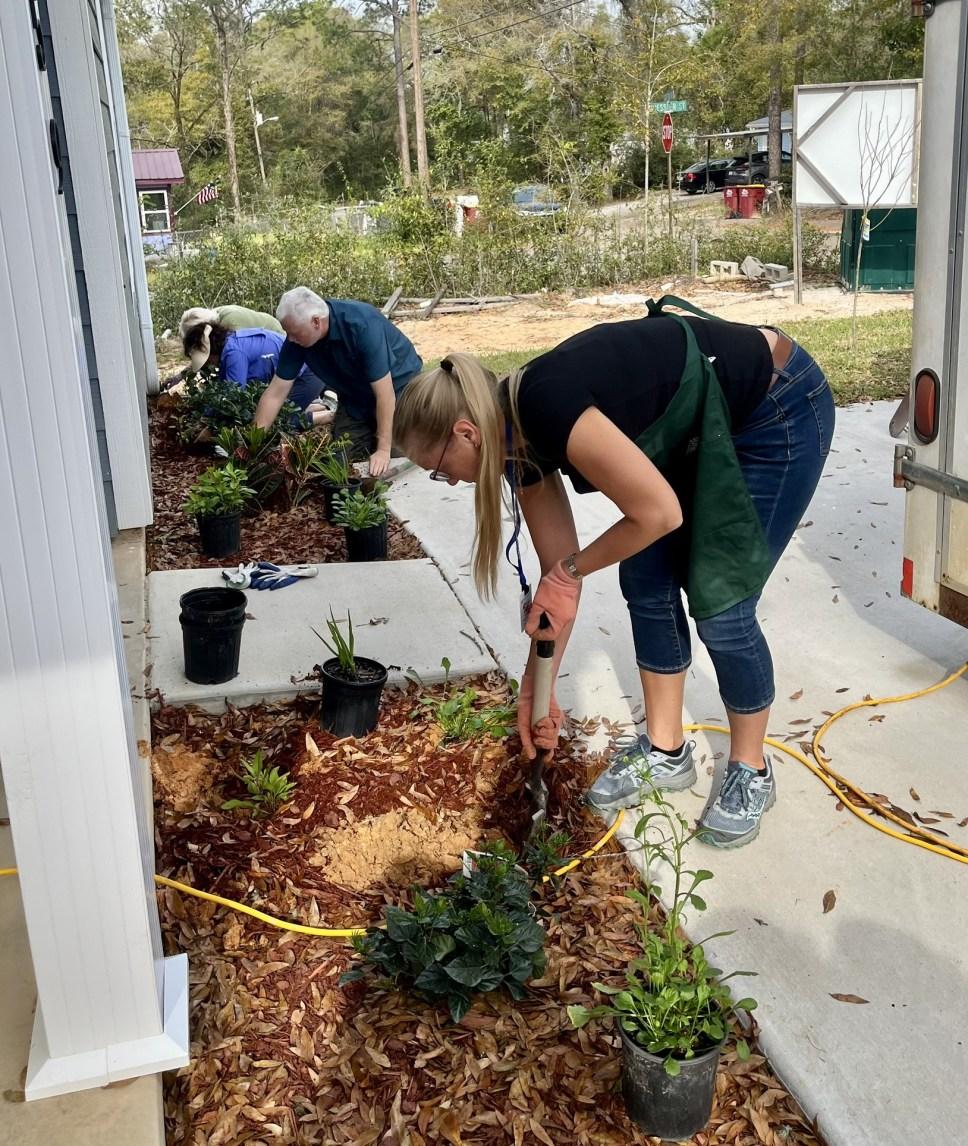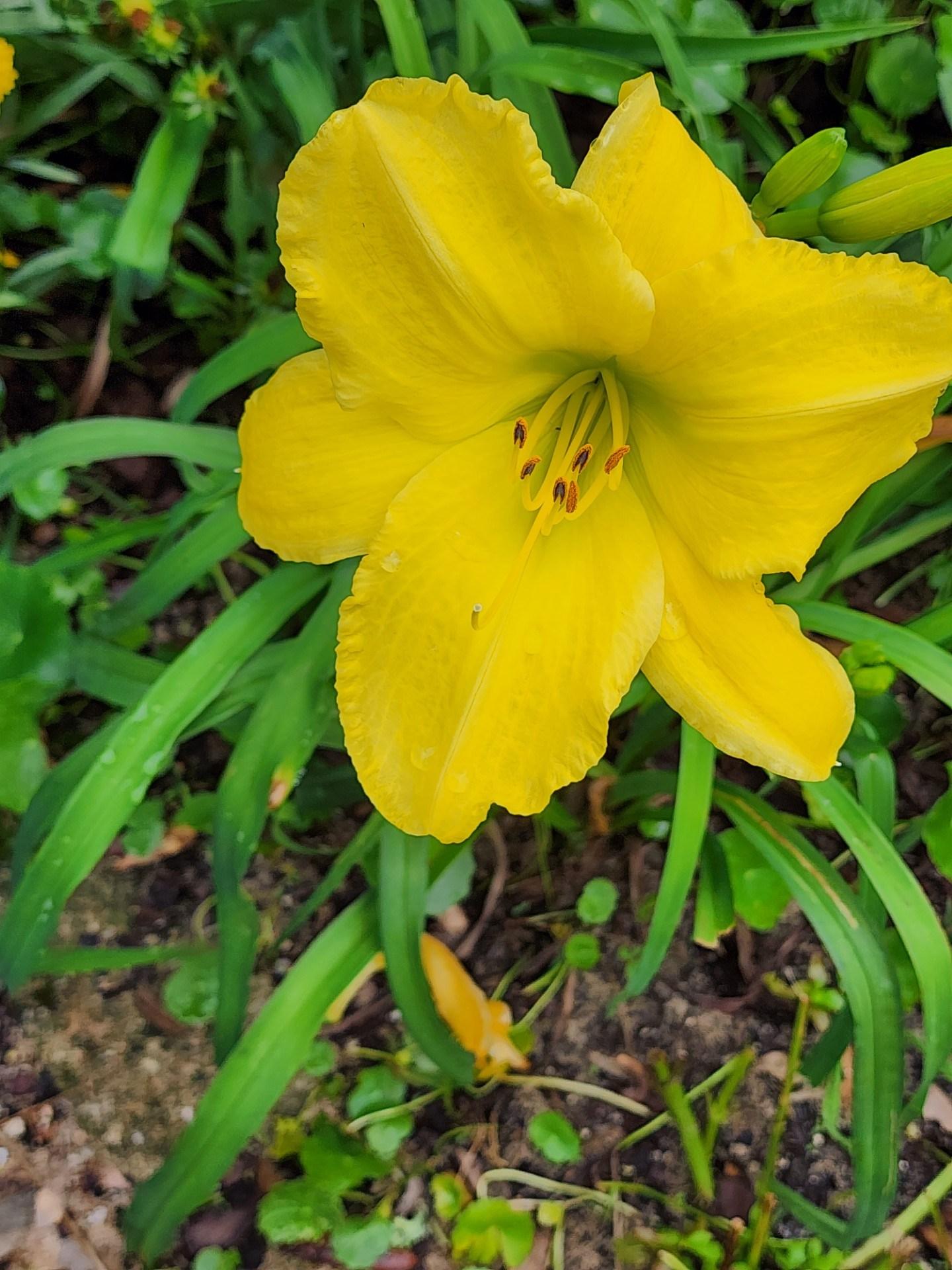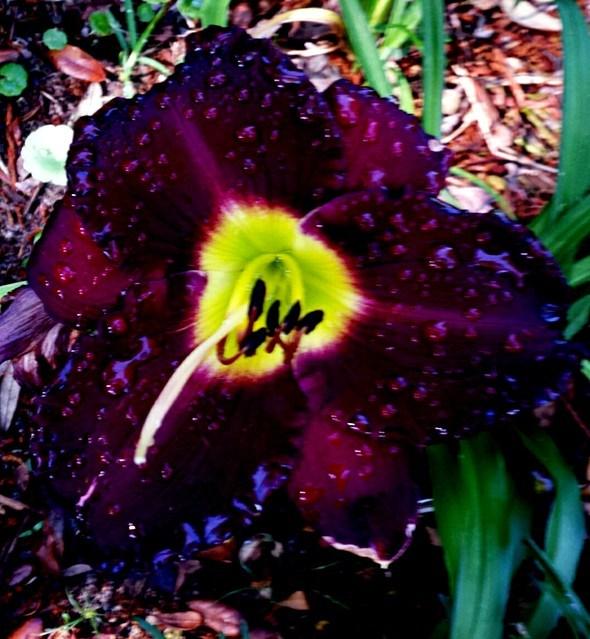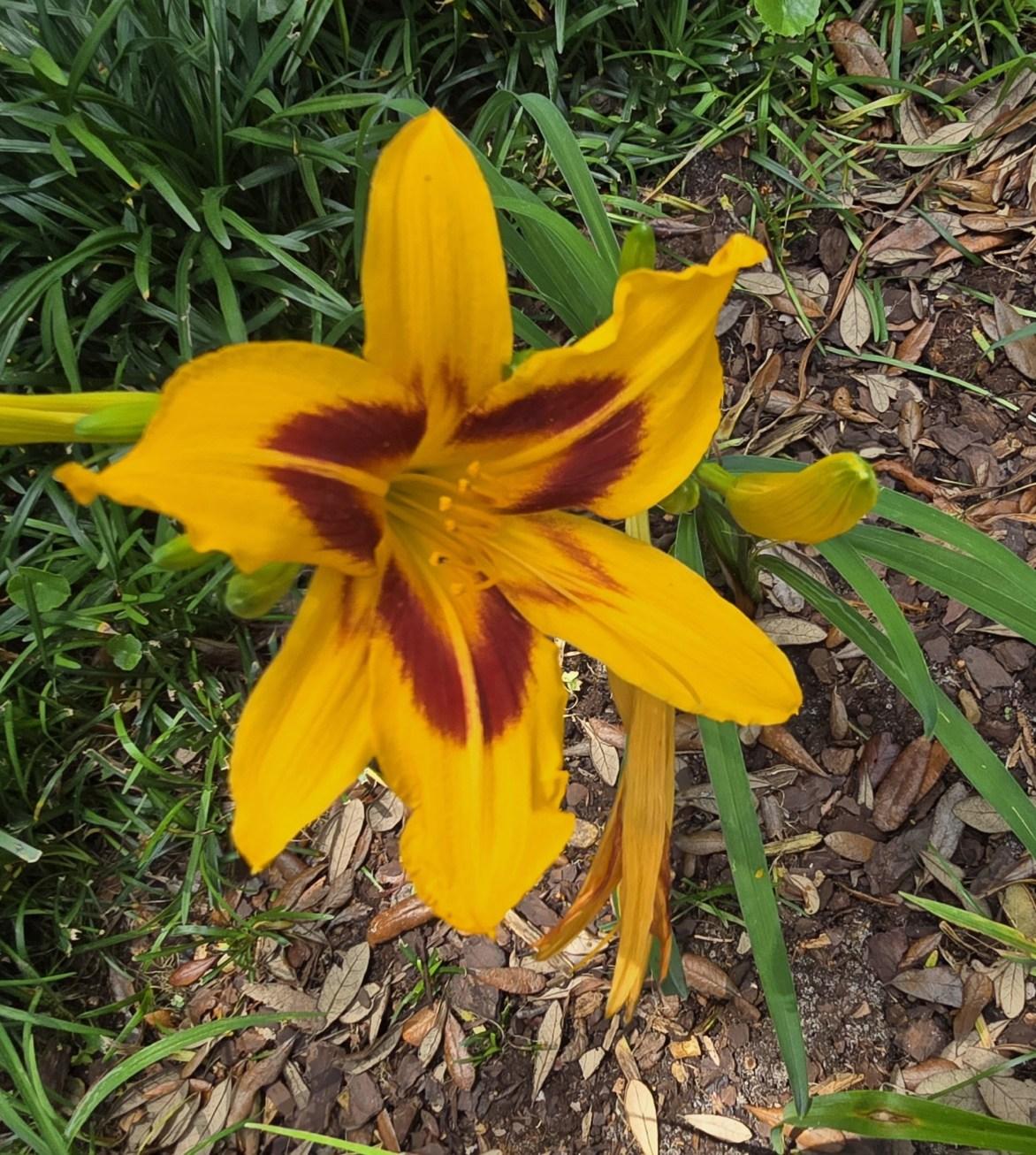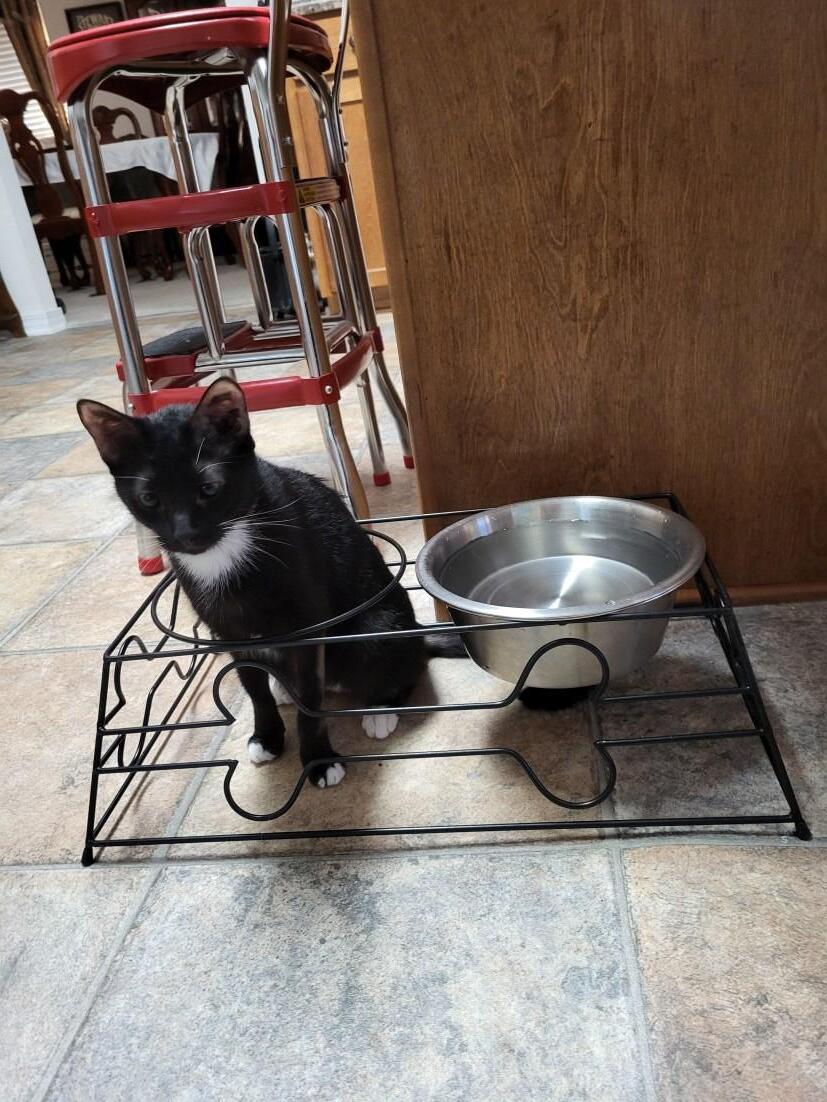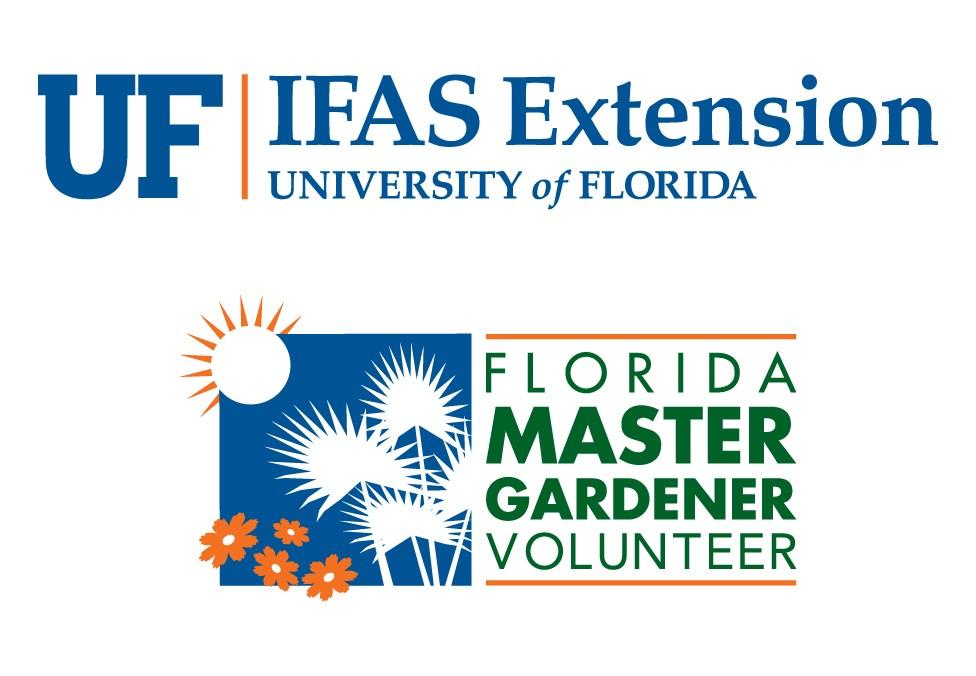LECTURE SERIES
The Lecture Series Committee engages vibrant, knowledgeable speakers on a variety of topics appealing to the public. Margaret Stewart provided folders containing a copy of her presentation, pen, pad, herb growing info, etc. PLUS individual jars of herbal vinegar as 'take homes' for each attendee. There is one more program this season... make plans to attend!
Photo courtesy of K. Foster
Insidious Flower Bug, Minute Pirate Bug https://edis.ifas.ufl.edu/publication/IN1148
The Hibiscus Bud Weevil https:// edis.ifas.ufl.edu/publication/IN1328
The Predatory Mite Amblyseius tamatavensis https://edis.ifas.ufl.edu/publication/IN1450
My Pine Is Under Attack What Should I Do! A Primarily Insect-Based Decision-Support Guide for Pine Death Management https:// edis.ifas.ufl.edu/publication/FR399
PEST ALERT! INVASIVE LEAF HOPPER
Two-spot-cotton-leafhopper-Factsheet.pdf
PEST ALERT: Two-spot cotton leafhopper
by Kathy Foster
The Habitat for Humanity program, supported by a three person Master Gardener Volunteer committee along with volunteers and the teaching nursery, provided and installed plants for the first time to one home in Crestview in 2023. Another two homes were supported in early 2025 with two additional homes to be completed in late 2025. The nursery has donated and installed sixteen garden plants and one shrub to each one of the first three homes. Plants for the next two homes will be donated by a local commercial nursery but installation will be done by Master Gardener Volunteers. All of the homes are in Crestview.
The Habitat for Humanity program is a nonprofit organization which constructs homes for low income families and requires the recipients to invest "sweat equity" in the construction. The homes are purchased by the occupying families with low interest loans to allow them to begin building material wealth. The homes are "no frills" basic two or three bedrooms. Since there is no budget for landscaping, the Master Gardener Volunteer organization stepped in to provide that amenity. We foresee Master Gardener Volunteers providing future support for this worthy program.
CALLING FOR VOLUNTEERS
There are two Habitat for Humanity Homes in Crestview ready for landscaping. There will be approximately 50 plants to be installed between the two houses.
Most of the plants were donated by Paradise Plants and Palms in Valparaiso and our teaching nursery will supplement with plants to round out the landscape.
The work day is October 6th at 9:00 am
Please contact Lee Vanderpool to sign up!
Olga, Larry, Carolyn, and Dean hard at work installing plants.
Left to right: Carolyn Coleman, Olga Adams, Larry Williams, Kat Spieker, Toni Perez, Karen Sanders, and Lee Vanderpool
Reclaimed Water
This is Part 2 of the article previously featured in July, 2025
Who is using recycled water in Okaloosa County?
The Arbennie Pritchett Water Reclamation Facility in Fort Walton Beach was selected by Okaloosa County Water and Sewer (OCWS) in 2005 to begin a reclaimed water pipeline in Okaloosa County. Arbennie Pritchett WRF (FL)
- Water Collaborative Delivery Association This facility is located on land leased from Eglin AFB. The pipeline continues through the Eglin reservation with an eastern terminus near the Mullet Festival site in Niceville and provides supplemental reclaimed water to Niceville, with Valparaiso and Eglin AFB as future possibilities.
Currently, only a few areas in Niceville have reclaimed water, including Swift Creek, the Plantation, the Preserve, and the Front Porch Circle neighborhood. It is also available to some commercial properties, mostly the ones between CVS and Walmart, on the North side of State Road 20.
by Karen Harper
Requires special management:
*Treatment process results in increased salts and nutrients Soil and water testing needs to be regular
*Irrigation equipment will need regular maintenance
*Fertilizer application adjustments
*Plant material changes
*Monitor soil conditions
Salinity:
*Plants and turfgrass varies in salt tolerance
*Can build up and crust on soil surface
*Centipede grass, Azaleas, - intolerant
*St. Augustinegrass, Indian Hawthorn –very tolerant
Who’s Using it Internationally?
Global treated wastewater reuse is estimated at approximately 11% of the total domestic and manufacturing wastewater produced. Municipal wastewater reuse is particularly high in the Middle East and North Africa region, in countries such as the UAE, Qatar, Kuwait and Israel.
These are some of the issues with recycled water that Sheila Dunning identified in a PowerPoint presentation on the use of reclaimed water here in Okaloosa County.
*NOT regulated by Environmental Protection Agency
*The state establishes guidelines to protect human health and water quality (fecal coliforms, parasites)
*Must meet disinfection standards, based on site use
*Property must be marked to warn people not to drink
*Can’t be used in swimming pools
The United Nations Sustainable Development Goal 6 is "Halving the proportion of untreated wastewater and substantially increasing recycling and safe reuse globally by 2030".
Treatment processes. There are several technologies and combinations of technologies used to treat wastewater for reuse and ensure that the processed water is hygienically safe, meaning free from pathogens. Some common technologies include ozonation, ultrafiltration, forward osmosis, reverse osmosis, advanced oxidation and activated carbon.
Some water-demanding activities do not require high grade water; thus, wastewater can be reused with little or no treatment. One example
Reclaimed (cont’
of this would be flushing toilets using greywater from baths and showers with little or no treatment required. Wastewater is generally treated to only secondary level treatment when used for irrigation.
Agricultural reuse. Reclaimed irrigation water can be used in different ways on different crops, such as for food crops to be eaten raw or unprocessed. For processed food crops: crops which are intended for human consumption not to be eaten raw but after food processing (i.e. cooked, industrially processed). It can also be used on crops which are not intended for human consumption (e.g., pastures, forage, fiber, ornamental, seed, forest, and turf crops). Needless to say, there are risks in using untreated municipal wastewater for irrigation –often in an unsafe manner. Municipal wastewater can contain a mixture of chemical and biological pollutants. In low-income countries, there are often high levels of pathogens from excreta. In emerging nations, where industrial development is outpacing environmental regulation, there are increasing risks from inorganic and organic chemicals. The WHO developed guidelines for safe use of wastewater in 2006, advocating a ‘multiplebarrier' approach to wastewater use, for example by encouraging farmers to adopt various risk-reducing behaviors.
Reuse in space stations. Wastewater reclamation can be especially important in relation to human spaceflight. In 1998, NASA announced it had built a human waste reclamation bioreactor designed for use in the International Space Station and a crewed Mars’ mission. Human urine and feces are input into one end of the reactor and pure oxygen, pure water, and compost (humanure) are output from the other end. The soil could be used for growing vegetables, and the bioreactor also produces electricity.
Aboard the International Space Station, astronauts have been able to drink recycled urine due to the introduction of the ECLSS system. The system costs $250 million and has been working since May 2009. The system recycles wastewater and urine back into potable water used for drinking, food preparation, and oxygen generation. This cuts back on the need
to frequently resupply the space station.
Problems with Recycled Water
Costs. It costs more to reclaim water than to use fresh water in many regions of the world, where fresh water is plentiful. However, reclaimed water is usually sold to citizens. at a cheaper rate to encourage its use. Reclaimed water systems usually require a dual piping network, often with additional storage tanks, which adds to the costs of the system. The reclaimed pipeline in Okaloosa County is purple, to distinguish it from potable water pipes.
Regulatory, economic, social and institutional challenges. Psychological barriers, sometimes referred to as the "yuck factor", can also be an impediment to implementation, particularly for direct potable reuse plans.
Health Aspects. Reclaimed water is considered safe when appropriately used. Reclaimed water that is for use in recharging aquifers or augmenting surface water receives adequate and reliable treatment before mixing with naturally occurring water. Some of this water eventually becomes part of drinking water supplies. The main difference between reclaimed water and the other waters appears to be that reclaimed water has been disinfected and thus has disinfection byproducts (due to chlorine use).
Photos courtesy of Okaloosa County
The Midnight Star of the Haunted Garden by Dana Jolman
Master Gardeners know that some plants aren’t just grown...They perform. Black Velvet Begonia Rex, with its star-shaped leaves and gothic palette, is one of those performers. This particular cultivar unfurls velvet-dark foliage streaked with neon-green veins and is edged in crimson fuzz, looking less like a houseplant and more like a prop from a Halloween stage set. Its appearance may be haunting, but its cultivation offers a rewarding challenge worthy of any plant lovers' collection.
Rex begonia are rhizomatous begonias, prized not for their flowers but for their foliage artistry. Their brooding leaves contrast beautifully with the theatrical backdrop of nearly black foliage slashed with glowing green venation, while the fringed with fiery red, and jagged margins give each leaf the appearance of being torn from a spell and potion book right out of Salem.
For gardeners accustomed to coleus, caladium, or fancy leaf geraniums, Rex begonias lurk in a category all their own. Their leaves shimmer like enchanted mirrors, casting a ghostly play of light and shadow that feels right at home in October. As the days grow shorter and dimmer these moody beauties step into the spotlight. The perfect drama fit for haunted gardens and midnight strolls.
matter mimics the forest floor where these plants naturally thrive.
Water: Maintain even moisture but avoid saturation. Allow the top inch to dry slightly between waterings, excessive watering invites the dreaded root rot.
Humidity: This plant appreciates a humid microclimate, whether in a terrarium, on a pebble tray, or clustered among other moisture-loving species.
Temperature: Consistent warmth above 60° F is essential; it declines quickly when subjected to chills.
Propagation:
Multiplying the Magic and Raising the Dead
Care: Lessons From the Shadows
Even for seasoned gardeners, Rex begonias can be temperamental. Their care requires attentiveness but not indulgence.
Light: Provide bright, indirect light. Morning sun is acceptable, but harsh rays will scorch the foliage. Think dappled woodland shade rather than open exposure.
Soil: A light, well-draining mix rich in organic
Begonia Rex is surprisingly easy to resurrect into new plants.
Leaf Cuttings: Slice along major veins, pin to moist soil, and watch plantlets rise.
Rhizome Division: Split older plants at the rhizome and each part will grow on. Petiole Cuttings: Root a leaf and stem under humidity until new growth emerges.
Water Propagation (The Caudron Method)
Place leaf petiole in a small glass of water. Keep in bright, indirect light and change the water frequently. Once roots appear, transfer to soil before the rot sets in.
For Master Gardener Volunteers, the Rex isn’t just a conversation piece. It demonstrates principles of light management, humidity needs, and multiple propagation methods to experiment with, making it an excellent teaching plant.
Begonia Rex reminds us that not all beauty in the garden is delicate or bright. Sometimes, the most striking plants are those cloaked in the shadows, living proof that in gardening, as in life, a touch of mystery keeps things interesting.
Daylilies by Karen Harper
I’ve spent a small fortune buying daylilies for my Shalimar garden beds and have been rewarded with many beautiful blooms for many years. However, I could have spent a much smaller fortune if I’d only known then what I know now. If you’ve ever planted a daylily or ten and seen them flourish for a season or two and then vanish, you’ve probably blamed yourself, or the weather, or the dog, or any number of other things, when what most likely happened is you planted the wrong variety for our climate. It turns out daylilies come in three basic foliage types: dormant, semi-evergreen, and evergreen. The only ones that have a chance of surviving here for more than one or two years are semievergreen and evergreen. This is because, as the name suggests, a dormant daylily must undergo a lengthy period of true dormancy during winter in order to survive. The foliage needs to die down to the ground. And last year notwithstanding, we don’t often get that much cold weather. So your lovely dormant daylilies struggle and ultimately die out. On the other hand, the semi-green and evergreen varieties have a much better chance of living for years because they retain their green foliage through the winter and continue blooming for years.
How did I learn this? Not from Lowe’s, Home Depot, Wal-Mart or even from my favorite plant nursery. They’re all happy to sell you all kinds of pretty daylilies that will not survive here. No, I learned this by finally reading the how-to information on my favorite daylily supplier’s website: https://tinyurl.com/3zwprpxr The site is full of good information about growing daylilies. And if you’re looking for an online supplier, I can highly recommend them. Their plants arrive large and healthy and, provided you choose the correct foliage type, they will grow, bloom, and multiply for years. You may notice, as I have, that many of their most stunning varieties are of the dormant varieties. Don’t fall for them unless you ’re OK with them only living for a year or two. Another thing to consider is the bloom season of the daylily you’re considering. With daylilies available in early, mid, late season, and repeat blooming varieties it’s possible, with some planning, to have daylilies blooming for many months in Zone 9a.
So, sites such Oakes Daylilies may provide the foliage type on the plants you’re considering,
but what do you do when you’re out plant shopping and nothing is provided but the name of the daylily? Fortunately, there is a database with a wealth of information at the American Daylily Society website: https://tinyurl.com/bdhcm776 Just type in the name of the daylily and you’ll get the information about it. This alone is helping me recoup some of that mis-spent fortune mentioned above.
As for cultivating daylilies, there really is no easier plant to grow, provided you start with the right plant and plant it in an area with several hours of sunlight per day. I successfully grow some daylilies in partial shade but there’ s no doubt they perform best with more sunlight. Do keep in mind that “full sun” in our area can be brutal! As to fertilizer, I find the advice on this to be too conservative. The Daylily Society recommends just a single application per year of fertilizer. I don’t think that would suffice here, with our sandy soils that freely leach nutrients with every torrential downpour. I fertilize mine every couple of months during the growing season. Any good, balanced fertilizer will do, but if you can shrug off fertilizer snobbery, there is no better fertilizer for daylilies than good old Miracle Gro. My experience here is that Miracle Gro today = blooms tomorrow, so I use it frequently in spring and summer. As your daylilies grow and thrive, they will multiply into large clumps that should be divided occasionally, so that they can continue to put energy into flowering. And you get lots of bonus plants to put elsewhere! I am sure the conventional wisdom would be to divide them during cooler weather when they are least active, but I regularly dig mine up and divide them whenever the mood strikes and they seem to handle that well.
Bottom line is, with some attention given to the variety, you can have a gorgeous, relatively carefree daylily display in your Zone 9a garden for several months every year.
Hemerocallis is derived from the Greek words for “day” (hemera) and “beauty” (kallos). Hence why we call them daylilies since their beautiful blooms last for one day. Turn the page to see some gorgeous options for your garden!
Chicago Star photo courtesy of Karen Harper
Black eyed Stella Photo courtesy of Karen Harper
Bella Lugosi Photo courtesy of Karen Harper
by Karen Harper
So, it’s the middle of a hot summer night and you are awakened by the sound of thunder and rain. You lie there happily and very grateful for the blessing from Ma Nature until you realize you *should* get up and trek all the way out to the detached garage (in the rain) to turn off the automatic sprinklers. Is that what’s troubling you, Bunky? If it is, there’s a remedy. There are remote control sprinkler controllers that you can operate with your smart phone. This being very high on my list of must-haves, I’ve done a little digging into what’s available. There is a wide variety of sprinkler systems out there so you will first need to know how many zones you need to control and choose a controller that can manage them. You’ll need to check that the controller you’re considering is compatible with your sprinkler system. Then, if you’re not a whiz, you’ll need someone to install the new controller for you. Ours is an 8-zone system. And, after years of resisting Alexa, we have become an Alexa home, for better or worse, so I’ m looking for one that is compatible with Alexa. You may want a different method of managing the app. Price is another consideration. Some of them are quite hefty. With all these variables, I will likely choose the 8-zone Rachio system for $199, said to be compatible with 99% of sprinkler systems, but I will first double check with the supplier that *our* system doesn’t fall in the 1% that Rachio isn’t compatible with!
With all that in mind, here are two lists of “best available”, (with some overlap between the two lists.)
Our 10 Best Garden Smart Irrigation Controller in the US - September 2025 | BestProductsReviews.com
The 6 Best Smart Sprinkler Controllers to Help Your Garden Grow There’s a Remote
Florida is the only state in the nation with an overall rain-sensor statute. Before 1991, a controller was the only component needed for an automatic sprinkler system. Since then, Florida Statute 373.662 states that “Any person who purchases and installs an automatic lawn sprinkler system after May 1, 1991, shall install, and must maintain and operate a rain sensor device or switch that will override the irrigation cycle of the sprinkler system when adequate rainfall has occurred.” If your system was installed after 1991, you need to have an operating rain sensor. It’s the law. Even if your system if your system was installed before 1991, it’s still highly recommended and encouraged to have one installed to conserve water.
Some helpful publications:
Landscape-Irrigation-and-FFL-Design-Standards-Feb2024.pdf
Calibrating Your Irrigation System – Gardening Solutions
Rain Gauges and Rain Sensors – Gardening Solutions
Saving Water Using Your Irrigation System – Gardening Solutions
Setting Your Irrigation Controller – Gardening Solutions
Ten Ways to Save Water – Gardening Solutions
Here we have our resident weirdo, who tried to convince me that she was trapped. Now you’ll notice the water dish in the other part but in her mind, that wire frame evidently became a forcefield that meant she couldn’t get out. After rescuing said cat from her self-imposed ‘prison,’ it got me to thinking how many times do we do the same thing without even realizing it?
How many times do we get it in our heads or in our gardens that we are just stuck. We’re stuck with a layout that doesn’t work, a plant species that just won’t thrive, and even laundry that won ’t stop.
As gardeners, the laundry is just going to happen. Best we can do is try to stay ahead of it and clean out the lint traps. We can take a few minutes to pre-treat the grass stains but if it’ s our ‘garden clothes’ what’s a few stains between friends? I doubt that the tomato plants will care.
Perhaps, when we’re stuck in other areas we could ask for a second opinion. It works with doctors, why not for our gardens? Another set of eyes may just see a solution that we had not thought about.
We could, when faced with plants that just don’t work, find an alternative. There are some plants I would love to have in my yard (and have had) but the upkeep or the moving indoors when cold weather is forecast just doesn’t work for me anymore. I have to make a choice and change my way of thinking about what I really want in some areas of the garden and landscape.
Perfect example is the sound barrier installed around our generator. It’s Elaeagnus. We all
know that it’s a fast grower. Heck, I trim those things and within days you can’t tell. Thankfully, mine aren’t the invasive ones but I’m tired of the constant upkeep. I do, however, need a barrier there. So what to do?
This time around they are getting chopped, and I mean chopped, to my level. They’ll look terrible for a bit, but something tells me that they’ll survive. They always survive. If they don’t, my problem is solved except for finding a replacement. Fencing is out of the question because there are all sorts of lines that run to the house in that area that help us survive. Small things like electric, water, etc. Minor things.
So, I will try the severe pruning to rein these things in and see how that goes. Don’t forget that the piles of yard waste have to be a certain size or they’ll never get picked up. I could just dig these things out but I don’t know anyone with a backhoe (and remember those pesky lifelines that run to the house). Digging them out probably isn’t an option and the last I checked the HOA would frown on a tactical air-strike.
There, I’m not stuck anymore. There’s a plan of sorts and I’ll be able to nurture my inner destructive desires on plants that I don’t care if they survive. With my luck, they’ll grow faster than ever.
Always remember that those times we’re stuck, it pays to take a moment and figure out if we’ re really stuck or if we just got ourselves into that water dish holder and there really is a way out.
Plentiful Plantings
BE THE REASON SOMEONE SMILES TODAY
Equal Opportunity Institution
Mission
To assist Extension Agents in providing research-based horticultural education to Florida residents.
Vision
To be the most trusted resource for horticultural education in Florida.
The Compost Pile is a quarterly publication created by the Okaloosa County Master Gardener Volunteers.
Marg Stewart Editor
Karen Harper, Debbie Sewell, Katy McMackin Co-Editors
